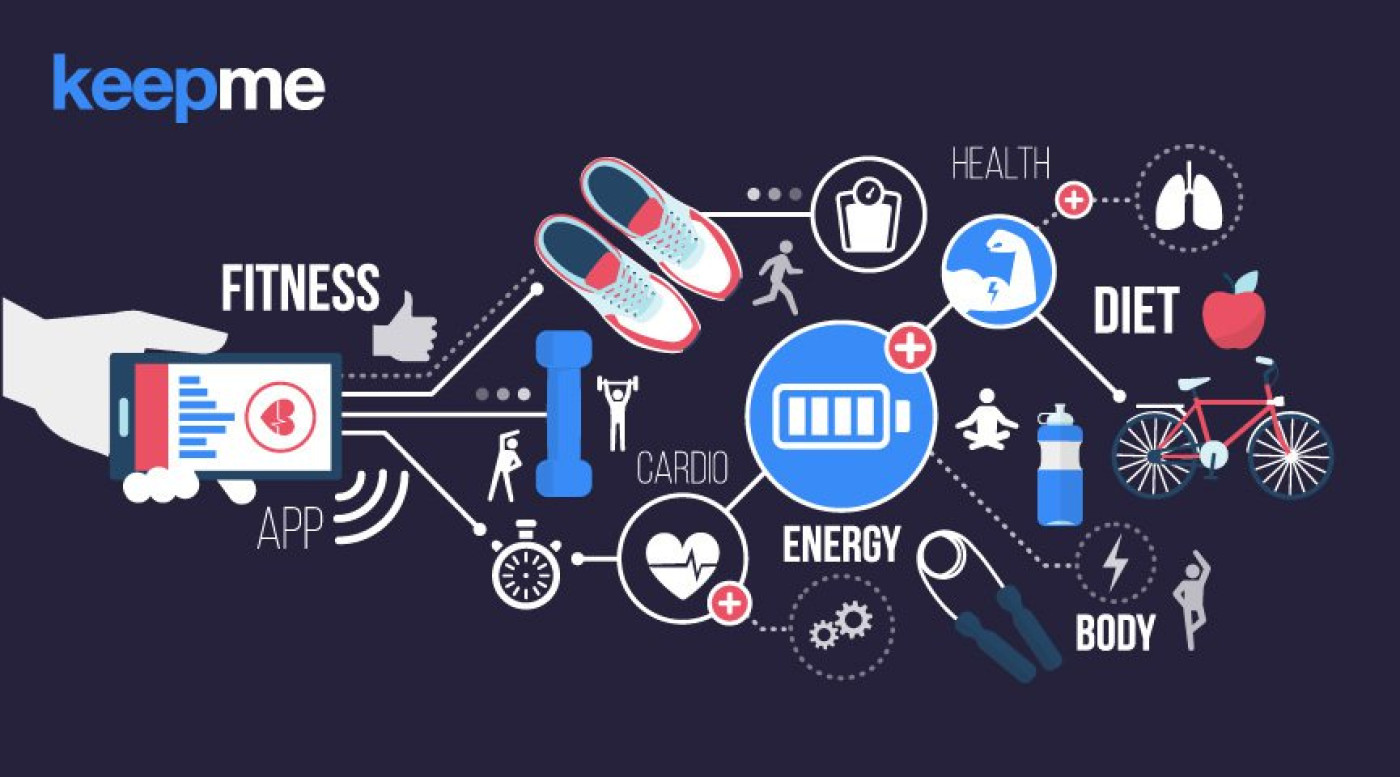The future of fitness isn’t hybrid. It’s ecosystems.


The term ‘hybrid’ fitness has populated conversations across the sector ever since COVID-19 forced gyms closed and consumers online. And granted, the first step had to be for operators to look beyond the bricks and mortar of their physical facilities. But turning to hybrid fitness business models as the solution is limiting horizons and causing problems for the longer term.
By definition consisting of two parts, a hybrid fitness model is in fact a huge simplification of what’s actually needed. It’s encouraging operators to think about their digital offering as an island – part of a dual on-site/digital model in which the digital offering is simply an extension of the physical experience. And that isn’t necessarily a good fit for the new marketplace.
First of all, given digital will only be a complement to, not a replacement for, the gym experience once all facilities are open again – there’s the good news – consumers are more likely to choose a digital offering that supplements their on-site activities with a variation, or indeed something completely different, rather than a digital version of the on-site product. If someone attends the gym for group cycling and strength training, for example, what they want from a digital subscription is stretching, yoga, meditation.
More important still, however, is the fact that the future of fitness is categorically not binary. Not hybrid. Value will only be unlocked for the consumer when all content, all experiences, indeed the entirety of a club’s offering are part of the customer’s personal wellness ecosystem.
Consider, for example, how much more useful an app such as Strava is when integrated with Apple Health or Google Fit, with all your personal metrics updated automatically. Customers now have a more holistic view of what defines wellness, picking and choosing their products and services accordingly. In doing so, they build their own ecosystem, of which their gym is but one part.
Set hybrid fitness aside. Where do you fit in the wellness ecosystem?
The question for gym operators, then, is this: how much of a member’s wellness ecosystem can you really control? How much should you even try to control?
Stress, hydration, nutrition, activity levels, mental health. These are just some of the critical areas that, when optimal, translate to a healthy, happy human. Nearly always connected and near impossible to dial in perfectly all the time, nevertheless the management of these key areas will cumulatively result in the achievement of the customer’s wellness goals.
That makes it very tempting for gym and health club operators to try and deliver everything. To position themselves as the go-to for all things wellbeing. But in doing so, they are fighting a losing battle – not to mention undermining their credibility – because there are already myriad digital solutions that do it better, delivering against the broader wellness agenda in a specific, measurable, personalized way.
And here’s the thing: it’s actually OK that, as an operator, you don’t control the entire wellness experience.
That doesn’t mean you can’t play a part in the overall ecosystem – we’ll come to that shortly. It simply means you don’t have to try and control everything. It’s OK to be just one spoke in the wellness wheel.
Your challenge is firstly to determine which part(s) you can and should control, then make that crystal clear to consumers. Where do you fit in? What role(s) do/should you play in the ecosystem? Forget about the activity you deliver or the market segment in which you operate. What are the specific needs, perhaps not yet explored, that you are in fact better qualified than anyone else to meet?
Once you’ve identified this, work out how to own this – the elements of the journey you do or could have control over – to the best of your ability.
Data empowers the customer
Be aware that, even when you narrow your sights and focus on just a portion of the ecosystem, consumers will actively benchmark your price points against the possible alternatives – not based on a like-for-like comparison, but on perceived value of impact and results within the specific segment(s) of the overall wellness journey in which you operate.
As a result, some will see gyms as unnecessary.
But this is something gyms must learn to accept as the market continues to evolve. Indeed, even among gym-goers, consumers are becoming increasingly aware that three visits to a gym each week is not going to guarantee their best selves. They understand that there are many variables involved, and that adversity in any of these areas will affect their outcomes. They know a gym visit is but one action within the overall picture.
This knowledge is growing as education around sleep, hydration, mindfulness, nutrition and activity levels becomes mainstream.
It is boosted further by the fact consumers carry around in their pockets, and on their wrists, capabilities of physiological measurement and information sources that five years ago you wouldn’t have seen outside of a professional sports team. Current mobile phones, wearables and the apps that support them have the capability to guide and measure, as well as motivate their owners with levels of data far beyond what a doctor gets to work with when doing diagnostics in a general practice, never mind a gym instructor.
Operators, therefore, need to be comfortable not owning the customer’s wellness journey, accepting that they will only ever meet a portion of people’s overall wellbeing requirements.
So, what part will you play?
A fitness operator could play a number of parts in someone’s future wellness journey, but broadly speaking there are two options. Both are important to the customer, though with different value propositions. One is also inherently more long-term in nature than the other.
The first is a resource provider: my gym provides me with the space, equipment and classes that will allow me to achieve a portion of my wellness requirements – mainly cardio and strength. Its ability to provide a variety of equipment, with the potential for guidance on how to use it, is valuable to me. When combined with a social aspect, a community, it represents a solid proposition for this part of my requirement.
However, all of this is product-focused. True, the need for fitness product is not reducing. In fact, it’s probably increasing. But focusing on product limits your appeal, your perceived value and your longevity in a market where fickle consumers are always looking for the next shiny thing. The thing that will deliver better results, faster.
Meanwhile, there is another, second option: one that requires operators to change their emphasis from product to customer outcome. This is a fundamental change, but in making this leap, operators will increase trust, value, and inevitably the length of the relationship.
Add value to the ecosystem
Focusing on outcome means focusing on the ecosystem, understanding what contribution you as an operator can make to consumers’ overall wellness. And so we return to our previous observation: the fact that gyms can play a role in the broader wellness ecosystem without having to control or deliver all of it.
Indeed, delivering your part to the best of your ability will necessarily mean finding ways to add value to the whole ecosystem; it is only by doing this that you will secure your place. Allow us to explain.
Operators have an opportunity to step out of the passive role they currently play when a member trains at a club, adding value to the journey – and to the whole ecosystem – by leveraging their understanding of the bigger picture. By joining the dots on behalf of the consumer.
Anyone with a smartphone has the capability to record and analyze an ever-increasing amount of physiological and environmental data points that affect wellness. Add a wearable and the combination provides a veritable laboratory of the human condition.
In the early days, intentional action by the user was required to record activity. Now phones and wearables are full of sensors. From accelerometers that can automatically track your movement – and that when combined with a gyroscope can measure your sleep – to sensors that measure exertion through heart rate and the current saturation of oxygen in your blood, it’s possible to track more than 50 variables for review.
However, many people are completely unaware of the treasure trove of health metrics they carry around with them in Apple Health and Google Fit. Even if they did know it was there, they would have no idea how to use that data, translating it into actions that would lead them towards their desired outcomes.
Because it takes expertise to make the all-important connections between datasets – connections that, in turn, amplify the value of each metric and deliver comprehensive insight at a personalized level.
And this is where gyms have an opportunity to step in and join the dots. As an operator, you don’t have to deliver every spoke of the 360° experience, but your team should be able to educate on all spokes and help people draw them – and the data from them – together into a prescribed, personalized action plan.
Become the hub
And gyms do, at least currently, have the credibility to do that. To the majority of consumers, their gym membership represents their most overt action in their quest for health. To some it may be a smaller part, but fitness operators nonetheless currently occupy a position of authority in a customer’s mind.
This should be seized upon while it remains the case. Even while acknowledging that gyms are just one of many possible contributors to our overall health, operators can absolutely step up and own the ‘hub’ positioning – something that transcends their physical, and even digital, offerings.
To achieve this, operators must establish a more comprehensive relationship with customers, whereby they take additional responsibility to educate on the importance and impact of other spokes. This relationship will extend their reach beyond their sites, as well as impacting how they engage members within those sites. It will endow operators with continuing authority and drive perceptions of considerable added value.
The long and short of it is this: somebody will own this relationship with the customer. And sure, the likes of Apple and Google, with their aggregator approach and technology bias, would seem strong favorites – but they currently do not hold that position of authority with the consumer. For now, at least, they are also limited to the consumers they have in their respective ecosystems. They seem happy to be the repository, encouraging an ecosystem of providers to work with the data to enhance the value and keep customers on their platforms.
All of this means there is still a window in which gyms can claim ‘hub’ status. Operators will need to secure access to the data that will drive behaviors and measurements. They will need to ensure team members are fully trained and equipped to analyze and interpret that data more robustly than even the most advanced app. But it’s absolutely possible. My app-based journey could, for example, be supplemented with tailored educational content, along with benchmarking my progress on my age and gender for motivation and gamification. It could be supplemented with trainer-led personal reviews, either in-person or virtually.
All of a sudden, my gym owns the ability to influence my (ecosystem-wide) outcomes through the delivery of comprehensive guidance and measurement.
In doing so, the service becomes a critical part of my life. My relationship with my health club is transformed: no longer judged as a purely bricks-and-mortar product but rather an integral part of my every day – not to mention one that can command a higher price point, with higher loyalty and lifetime value.
This is why operators must look beyond the horizon-limiting hybrid fitness business model to an ecosystem approach. Because while all this talk of knowing your place in the ecosystem, knowing what you represent to people, and not striving to do more might seem counterintuitive, it is in fact the basis of loyal, profitable customer relationships.
Read more in our white paper, The Fitness Future: Rules of Engagement.
Discover Keepme in your custom demo
Book your FREE 15-minute demo and discover how Keepme can revolutionize your sales and membership processes.


